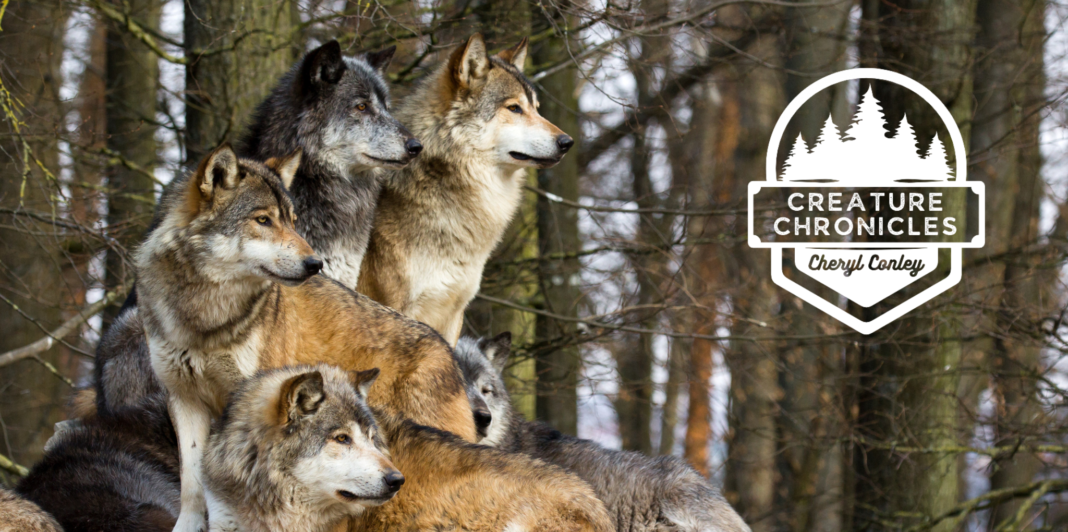Creature Chronicles: The Top Dog
As youngsters, we are told to be afraid of the “big bad wolf” but in reality, wolves don’t see us as prey and attacks on humans are very rare.
Although you won’t find wolves in Texas, it’s interesting to know that they were once a necessary and important part of the state’s ecosystem. Both red and gray wolves were abundant in Texas with red wolves occupying the eastern half of the state and gray wolves in the west. Extensive hunting, trapping and habitat loss led to a rapid decline in their numbers. They are now considered extinct in Texas but I thought you might like to learn a few things about this fascinating animal.
The two wolf species that roamed Texas were the southeastern red wolf and the gray wolf. There was also a subspecies of the gray wolf that was called the Mexican gray wolf or Lobo, which is the Spanish word for wolf.
Wolves travel and hunt in small packs usually consisting of a male, his female mate and their young from both the current breeding season and past seasons. The leaders of the pack, Mom and Dad, are sometimes referred to as the “alpha” wolves although some think the word “alpha” is outdated. L. David Mech, a renowned biologist, discourages the use of the word and explains that the “alpha” couple are just parents to the wolves in the pack.
For the most part, wolves are monogamous and will stay with each other for life. Occasionally, however, the male parent has a wandering eye and may cheat. If a partner dies and after a mourning period, the other one will eventually find a new mate. New packs are formed when a wolf leaves the pack and finds a mate. They breed and a new pack is formed.
Wolves breed once a year and the gestation period is about 63 days. The female will normally give birth to 4 to 6 pups and the pups are born blind and deaf. Interestingly, all wolves in the pack care for the young. The pups nurse from their mother but between 5 and 10 weeks of age, they will begin eating regurgitated food from the others in the pack. They begin to hunt at 6 months of age and are considered adults at 2 years old. In the wild, their lifespan is only 5 to 6 years.
Wolves don’t really howl at the full moon like some believe but they do howl as a way of communicating with each other. Their hearing is 20 times better than ours and they can hear a fellow wolf howling 10 miles away. Wolves have other ways of communicating as well like growling, barking, and whimpering. Body language is used, too, like posturing, using facial expressions and eye contact.
Wolves are carnivores. They prefer large hooved animals like elk, moose, and deer but will also prey on beavers, rabbits, and rodents, along with fish and even birds.
It is believed that our beloved family dogs are decendants of wolves. For the most part, scientists believe domesticated dogs evolved from gray wolves over 15,000 years ago. It remains a mystery when and where wolves began to evolve into dogs and with what group of humans. Looking at some of the dog breeds like tiny Chihuahuas and fluffy Pomeranians, it’s hard to believe they are relatives of wolves. Though their physical appearance doesn’t resemble wolves, their genetic makeup remains similar to that of a wolf. There are some dog breeds, however, that are genetically closest to wolves. They are the Alaskan Malamute, the Siberian Husky, the Shiba Inu, the Pekingese, the Saluki, the Afghan Hound, the Chow Chow, and the Shih Tzu.
We can thank wolves for giving us our faithful furry companions. The next time you hug your dog, you’re really hugging a domesticated wolf. Pretty amazing, wouldn’t you say?















